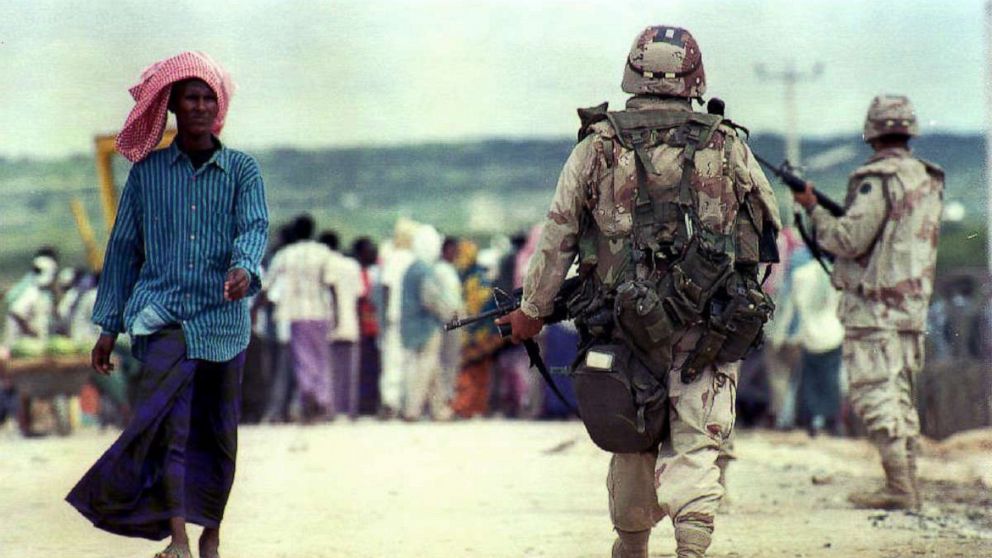
With the announcement by the U.S. Defense Department of the creation of five new bases in Somalia, the U.S. has made it clear it is stepping up its intervention in the country.
The previous government in Somalia had run the U.S. military out of Somalia, pretty much, but when the new, U.S.-backed Somali president was about to be inaugurated, the U.S. had its troops in the air flying into Somalia from AFRICOM headquarters in Germany even before he was officially president, making it clear the fix was in.
The reason the U.S. gives for “intervening” in Somalia is that old bogeyman, “fighting terrorism,” in this case the undoubtably terrorist “al-Shabaab.” But the fact is there was no “al-Shabaab” (meaning “the youth”) before the U.S.-instigated Ethiopian invasion of Somalia in 2007. Al Shabab was a direct result of U.S. intervention in Somali affairs and now the U.S. has to “intervene” once again, to “protect” the Somali people from “terrorism”?
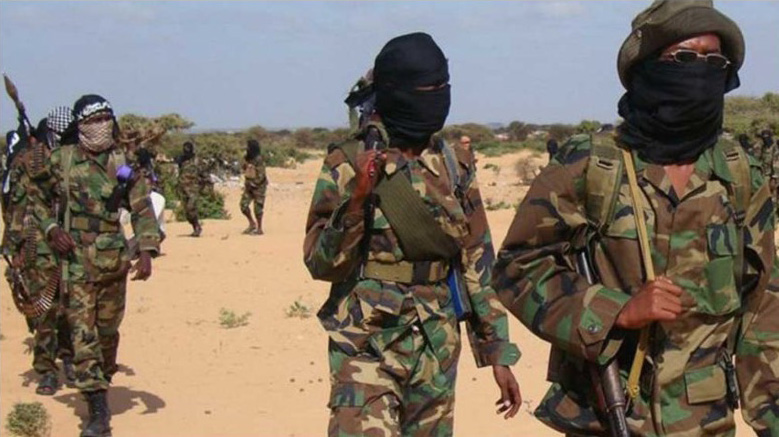
Direct U.S. intervention in Somalia goes back to the early 1990s, when U.S. National Security Adviser Anthony Lake sent U.S. troops to invade Somalia, something his nominal boss Bill Clinton, when asked why this was done, said so infamously, “I will have to ask Tony Lake about this.”
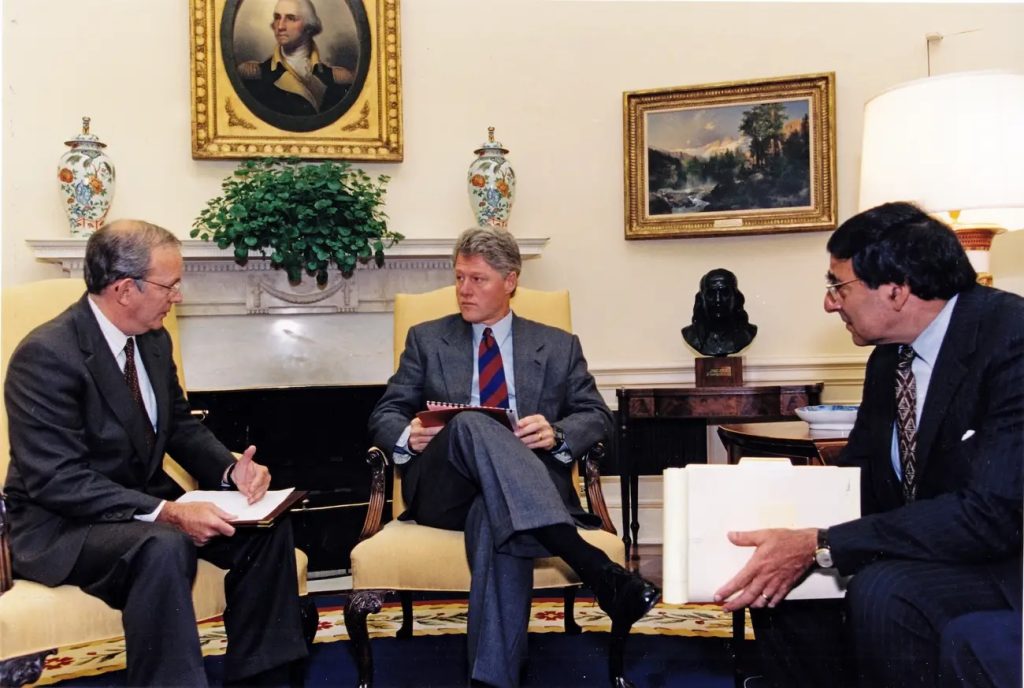
Lake was most famous for the “Black Hawk Down” debacle when American helicopter pilots were dragged through the streets of Mogadishu, beaten and killed by angry Somalis after their helicopters had been shot down.
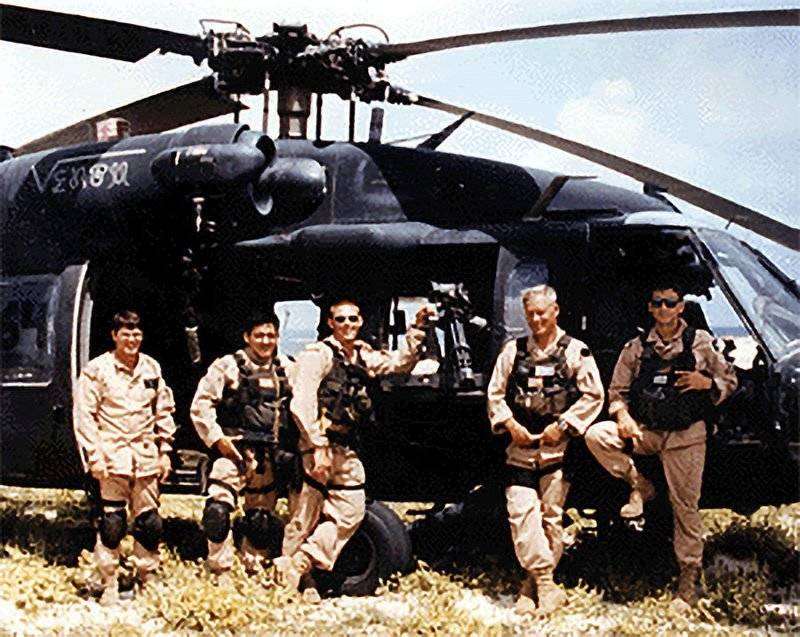
The U.S. invasion of Somalia had been designed to prevent Somalis from unifying and forging a strong country that could withstand U.S. imperial interference.
The U.S. military massacred clan and religious elders who were trying to defend their country from foreign attack.
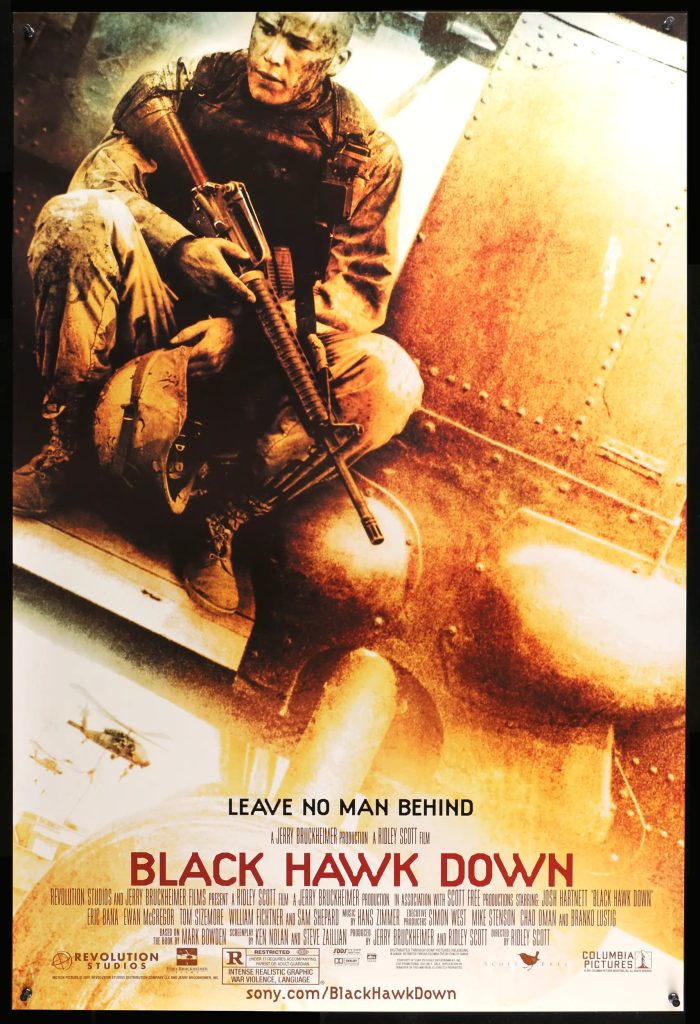
An all-white Special Forces unit used their helicopters to blast a building where a clan meeting was taking place, slaughtering hundreds of the most important leaders in Somalia.
Media accounts largely avoided mention of the bombing of the clan elders as did the 2001 blockbuster Hollywood propaganda film Black Hawk Down, produced by Ridley Scott and Jerry Bruckheimer, which heroized the U.S. helicopter pilots and made them out to be innocent victims.
To understand why the U.S. has a history of animosity toward Somalia you need some basic history going back to the very beginnings of the modern Somali state upon independence from the colonial powers in the 1950s and 1960s.
Somalia’s first and only President, Siad Barre, was a real Pan Africanist and provided support to anti-colonial freedom fighters from across Africa and was the biggest threat to U.S. hegemony in Africa to arise from the newly independent African countries.
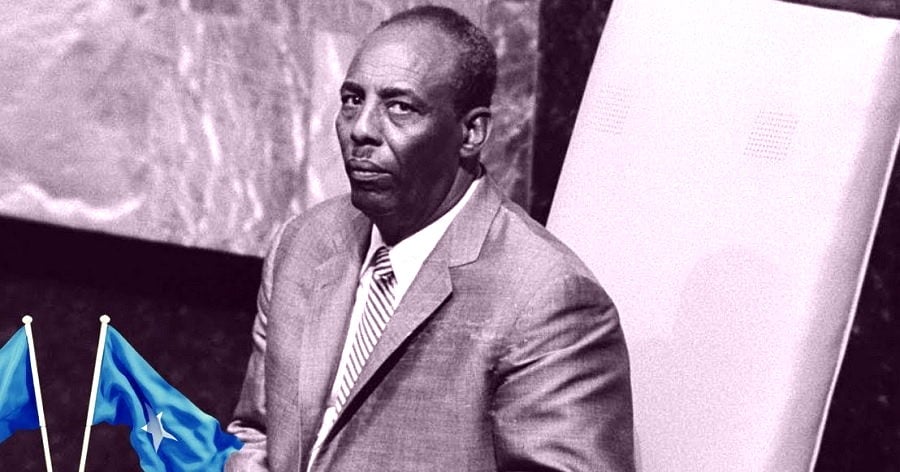
From Angola in western Africa to Mozambique in eastern Africa, Zimbabwe in central Africa to Eritrea in northeast Africa, Somalia became a refuge for those engaged in the armed struggle for national liberation, providing a safe haven from the death squads from the U.S.-backed apartheid regime in South Africa as well as for the Eritrean liberation forces that ultimately prevailed in their national liberation struggle against the Ethiopian colonialist regimes, first of Haile Selassie and later the Soviet-backed Mengistu regime.
Today, with the Ansarallah/Houthi attacks on Western shipping passing through the Bab-el-Mandeb (so aptly named “the gate of tears”), the critically strategic chokepoint linking the Red Sea to the Indian Ocean through which the majority of trade between the world’s two largest economies, Asia and Europe, passes, the importance for the U.S. to control Somalia has become much more obvious, for Somalia sits at the mouth of the Bab-el-Mandeb.
Having a nationalist, independent Pan Africanist government leading Somalia from independence onwards, providing the only real concrete support by any newly independent African government for the anti-colonialist armed struggles across the continent, was a major thorn in the side of U.S. hegemony in Africa. And this was something the U.S. was determined to stamp out and never allow to happen again.
So after the death of Somali President Siad Barre in 1991 and the subsequent drought and disintegration of Somalia, the U.S., under senior National Security Establishment Capo Tony Lake sent its troops into Somalia and ended any hope of a new Somali government of national unity being formed with the massacre of the delegates who were in the process of doing so.
In 2006 a new movement developed in the Somali capital Mogadishu under the leadership of the Union of Islamic Courts (UIC), a collective of religiously moderate Somali nationalists who organized their supporters to drive out the warlords, who some say were supported by the CIA, from Mogadishu, and brought peace for the first time in 15 years.
The UIC quickly got the Mogadishu port opened, then the Mogadishu airport. Banditry was widely suppressed and commerce was resuming, relieving the desperate situation for the people in the capital and the UIC began outreach to the clan and religious leadership in the rest of the country.
Having an independent, nationalist, “Islamic” government uniting Somalia was not something the U.S. was about to allow, so it sent its policemen on the beat in the Horn of Africa, the TPLF regime headed by Meles Zenawi of Ethiopia, to invade Somalia and overthrow the UIC.
Since Ethiopia has never initiated a war with the fervidly nationalist Somalis, it was always clear this was not something the TPLF under Meles Zenawi did willingly. The TPLF was arm-twisted by the U.S. into invading Somalia and the TPLF invasion ignited a storm of resistance uniting all factions against their traditional enemies, the Ethiopians. With the older generation of UIC leaders forced to flee the country, the armed resistance to the U.S.-instigated TPLF invasion was left to the youth arm of the UIC, al-Shabaab.
The clan-based factions in al-Shabaab quickly began to splinter and, with the deeply reactionary forces in the Arab regimes supporting the most backward elements in al-Shabaab, reaction was victorious and today’s terrorists were born.
When the UIC elders were run out of Mogadishu, they finally found refuge in Eritrea, which never forgot the debt it owed to Somalia. Under President Siad Barre Eritrean freedom fighters in the Eritrean People’s Liberation Front (EPLF) found their only friend on the planet, for no other country supported the Eritrean independence struggle but Somalia under Siad Barre. Eritrean freedom fighters not only had safe haven, military training and support but, most valuably, Somali diplomatic passports so their leaders could travel abroad raising support, all critical for the armed struggle’s survival.
The CIA, of course, knows all this and is convinced—rightly so—that Eritrea is the premier threat to U.S. hegemony in Africa: the “threat of a good example.”
Eritrea continues concrete support for the re-establishment of an independent sovereign Somali state and the defeat of the al-Shabaab terrorist army by training more than 15,000 Somali Federal Police and Army to date, with thousands more in training in Eritrea.
So the U.S. has to move fast to try to counter growing Eritrean influence in Somalia and these five new bases are just the start.
For more history on Somalia see:
https://www.counterpunch.org/2011/08/02/angel-of-mercy-or-angel-of-death/
https://www.counterpunch.org/2011/11/17/choke-point-bab-el-mande/
https://www.counterpunch.org/2013/05/07/the-un-and-250000-dead-somalis/

CovertAction Magazine is made possible by subscriptions, orders and donations from readers like you.
Blow the Whistle on U.S. Imperialism
Click the whistle and donate
When you donate to CovertAction Magazine, you are supporting investigative journalism. Your contributions go directly to supporting the development, production, editing, and dissemination of the Magazine.
CovertAction Magazine does not receive corporate or government sponsorship. Yet, we hold a steadfast commitment to providing compensation for writers, editorial and technical support. Your support helps facilitate this compensation as well as increase the caliber of this work.
Please make a donation by clicking on the donate logo above and enter the amount and your credit or debit card information.
CovertAction Institute, Inc. (CAI) is a 501(c)(3) non-profit organization and your gift is tax-deductible for federal income purposes. CAI’s tax-exempt ID number is 87-2461683.
We sincerely thank you for your support.
Disclaimer: The contents of this article are the sole responsibility of the author(s). CovertAction Institute, Inc. (CAI), including its Board of Directors (BD), Editorial Board (EB), Advisory Board (AB), staff, volunteers and its projects (including CovertAction Magazine) are not responsible for any inaccurate or incorrect statement in this article. This article also does not necessarily represent the views the BD, the EB, the AB, staff, volunteers, or any members of its projects.
Differing viewpoints: CAM publishes articles with differing viewpoints in an effort to nurture vibrant debate and thoughtful critical analysis. Feel free to comment on the articles in the comment section and/or send your letters to the Editors, which we will publish in the Letters column.
Copyrighted Material: This web site may contain copyrighted material the use of which has not always been specifically authorized by the copyright owner. As a not-for-profit charitable organization incorporated in the State of New York, we are making such material available in an effort to advance the understanding of humanity’s problems and hopefully to help find solutions for those problems. We believe this constitutes a ‘fair use’ of any such copyrighted material as provided for in section 107 of the US Copyright Law. You can read more about ‘fair use’ and US Copyright Law at the Legal Information Institute of Cornell Law School.
Republishing: CovertAction Magazine (CAM) grants permission to cross-post CAM articles on not-for-profit community internet sites as long as the source is acknowledged together with a hyperlink to the original CovertAction Magazine article. Also, kindly let us know at info@CovertActionMagazine.com. For publication of CAM articles in print or other forms including commercial internet sites, contact: info@CovertActionMagazine.com.
By using this site, you agree to these terms above.
About the Author

Thomas C. Mountain is an educator and historian with over 40 years background in Africa.
He lived and reported from Eritrea from 2006-2021 and at one time was the most widely distributed independent journalist in Africa.
Follow him on X/twitter at thomascmountain. He is best reached at thomascmountain@gmail.com.

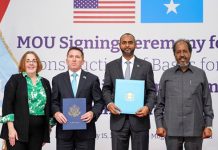
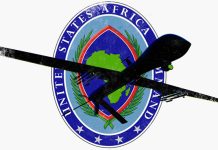
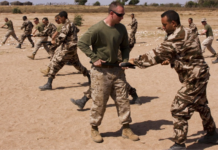

Perhaps it would be better if United States did not get involved as it may do more harm than good.
Most wars across the world are taking place in majority-Muslim countries, with Muslims mainly fighting each other, according to the The Washington Post.
In 2012, there were six civil wars worldwide. All took place within Muslim countries: Afghanistan, Pakistan, Sudan, Somalia, Syria and Yemen. Of the nine rebel groups in these conflicts, seven had an Islamist ideology.